Romantic Music
VERSION FRANCAISE DISPONIBLE. VEUILLEZ CLIQUER SUR L'ICONE (BAS DE PAGE)
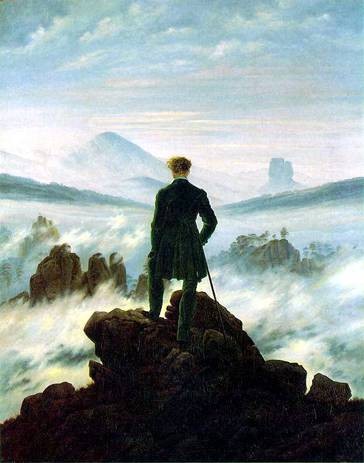
The concept of "absolute music", or " pure music ", applies to instrumental music that allows the Romantic composer to express his emotions without external input such as text or program. It is therefore opposed to vocal music in favor in the 18th century, as well as to program music.
Program music is written to depict extra-musical subjects such as poems, stories, paintings, etc. Already present in the 18th century, with for example Vivaldi's 4 seasons, it developed in the 19th century with Berlioz and his fantastic symphony, then with the symphonic poem, a genre particularly prized by Liszt and Richard Strauss.
Musical forms
Romanticism uses the musical forms of the classical era: sonata, quartet, concerto, symphony, transforming and adapting them. Thus we find 5 movements in Berlioz's Symphonie fantastique, as well as the use of Leitmotiv.
But Romanticism also invents new forms such as the Lied, the symphonic poem, as well as short pieces for the piano which, due to its expressive dimension, became the instrument of choice for romantic composers.
New harmonic forms also appear, with Berlioz and Liszt for example.
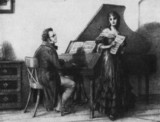
The Lied refers to a German song most often accompanied by the piano. It is the equivalent of the French melody which will be developed by Berlioz and later in the post-romantic period.
Schubert can be said to be the true creator ofLied, and in particular the concept of cycles of Lieder on texts by great poets, where the most used themes are of course love but also travel and nature..
Schumann and Brhams also wrote manu lieder as well as, later, Hugo Wolf, Gustav Mahler and Richard Strauss.
The main cycles of Lieder romantics are :
Schubert:- The Beautiful Miller (20 Lieder) - Winterreise (Winter trip) (24 Lieder), - Schwanengesang ( The Swan Song) (14 Lieder) - Das Fräulein vom See (The Lady of the Lake) (7 Lieder, including the famous “Ave Maria”). Robert Schumann:- Love and life of a woman (8 Lieder) - The Poet's Loves (16 Lieder) - Liederkreise (12 Lieder) | Hugo Wolf:- 51 Liederon texts by Goethe - Spanish Songbook - Italian Songbook - The Corregidor Mahler:- Die Kindertotenlieder (Songs about the death of children) (5 Lieder) - Das Lied von der Erde (The Song of the Earth) (6 Liederwith orchestra) Richard Strauss:- The Last Four Songs (for soprano and orchestra) |

tHE SHAPES OF THE ROMANTIC PIANO
Le Lied désigne un chant allemand accompagné le plus souvent par le piano. C’est l’équivalent de la mélodie française qui sera développée par Berlioz puis plus tard dans la période post-romantique.
On peut dire que Schubert est le véritable créateur du Lied, et en particulier du concept de cycles de Lieder sur des textes de grands poètes, où les thèmes les plus utilisés sont bien sur l’amour mais aussi le voyage et la nature.
On peut citer parmi les plus beaux Lieder de Schubert :
- Die Forelle(La Truite) (extrait)
- Der Erlkönig (Le roi des Aulnes) (extrait)
- Gretchen am Spinnrade (Marguerite au rouet) (extrait)
Schumann et Brahms ont également écrit de nombreux Lieder ainsi que, plus tard, Hugo Wolf, Gustav Mahler et Richard Strauss.
THE FORMES oF ROMANTIC PIANO
The piano is the most representative instrument of the Romantic period. It is increasingly played in families and many transcriptions are made to be played in private.
 They express themselves through new forms of short pieces such as Preludes, Etudes, Nocturnes, Waltzes, Mazurkas, Polonaises, Ballades and Impromptus (Chopin), Humoresques and Fantasies (Schumann), Romances without words (Mendelssohn), Etudes, Rhapsodies (Liszt).
They express themselves through new forms of short pieces such as Preludes, Etudes, Nocturnes, Waltzes, Mazurkas, Polonaises, Ballades and Impromptus (Chopin), Humoresques and Fantasies (Schumann), Romances without words (Mendelssohn), Etudes, Rhapsodies (Liszt).We can also mention here Karl Czerny (1791-1857), pianist and composer, who was a student of Beethoven and teacher of Liszt, for his pedagogical work which remains today the basis of all piano teaching, in particular with his works "The School of Virtuosity", "The School of the Virtuoso" and "The Art of Untying the Fingers".
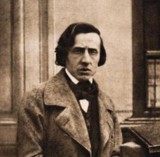
NOCTURNE:
Initially designating music intended to be played at night or inspired by the night (such as Mozart's little night music), the romantic nocturne becomes a short piano composition of a melodic and melancholic character. It is particularly well represented by Chopin who wrote 21, but also later by Gabriel Fauré who composed 13 and, in symphonic form, by Debussy's 3 nocturnes.
SCHERZO: The scherzo is knownas the lively and entertaining 3-beat movement of a sonata or symphony. It was Frédéric Chopin who introduced the scherzo as a piano piece in its own right. He composed 4 of them. They are also found in Liszt and Brahms. The romantic scherzo retains the 3-beat time signature and the 3-part structure of the classical scherzo.
FANTASY: Fantasy is a very free musical form. It has been practiced since the 17th century but is particularly appreciated by romantic composers.
FUGUE: The romantic fugue is freer, less rigorous than the classical fugue. It is found in Schumann and, more virtuoso and freer, in Mendelssohn.
IMPROMPTU: An impromptu is a piano piece that gives the impression of an improvisation, most often in ABA form.
The most famous impromptus are Schubert's 8 impromptus, Chopin's 3, and Fauré's 6.
Liszt and Schumann also composed impromptus.
DANCE PIECES: Many compositions for the piano are based on dance rhythms, such as:
- Waltzes: Chopin composed 17 for solo piano, Brahms 16 for piano 4 hands, Fauré composed 4 caprice waltzes…
- Mazurkas: Chopin composed 58 of them but they can also be found in Gabriel Fauré and Franz Liszt who also composed galops and csardas.
- The polonaises evoke the Polish dance of the same name, and are best known through Chopin who composed 16 of them. They are also found in Weber and Liszt.
- Brahms composed 21 Hungarian dances.
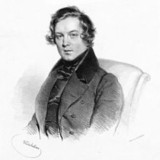
There are 23 in Schubert, 3 in Mendelssohn, Chopin, Schumann and Brahms and 1 in Liszt with the sonata in B minor.
PRELUDE: Originally, the prelude was a musical piece introducing an instrumental or theatrical work. With Chopin, it became an independent work, without any particular form.
Perhaps remembering JS Bach and his "well-tempered clavier" (two collections of 24 preludes and fugues in all keys), Chopin composed 24 preludes in the 12 major and minor keys. Later, he was followed in this by Rachmaninov and Debussy.
Gabriel Fauré composed 9 preludes for piano.
Mendelssohn's 12 preludes and fugues for piano are more directly inspired by JS Bach.
ETUDE: Originally, the etude was a piece intended to improve piano technique. In the 19th century, it became a work of art in its own right, allowing the performer to showcase his or her virtuosity.
Like preludes, etudes are often composed in all keys and collected in collections of 12 or 24 pieces.
The most famous studies are those of Chopin (2 collections of 12 studies plus 3 others) and the 12 transcendental execution studies of Liszt as well as his 6 studies after Paganini.
Schumann and Brahms also composed piano studies on themes by Paganini.
BALLAD: The ballad originally refers to a narrative poem made up of several stanzas. In music, it is a rather narrative instrumental piece, without a defined plan. Chopin wrote 4. There are also 4 in Brahms and 2 in Liszt.
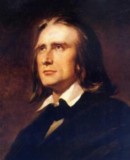
The symphonic poem
The symphonic poem is a programmatic music inspired by elements outside of music such as poems, legends, descriptive or philosophical texts. It is often articulated around a leitmotif representing a character.
It differs from the program symphony (such as Beethoven's Pastoral Symphony or Berlioz's Symphonie fantastique) mainly in that it has only one movement.
Liszt, who was its main initiator, wrote 13. This genre was very popular with romantic and post-romantic composers such as Richard Strauss, Smetana, Dvorak, Sibelius as well as Russian composers such as Borodin, Mussorgsky, Rimsky-Korsakov.

The sonata
We saw above that the sonata remained an essential form of piano music .
This shape is also used for other instruments, mainly the violin and the cello.
A particular form of sonata, called cyclic, appears in some composers such as César Franck and Camille Saint-Saëns. In this form of sonata, the same thematic idea, like a leitmotif, is found in all the movements.
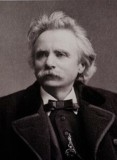
The concerto
The concerto , which we saw develop in the Baroque and Classical periods, is particularly appreciated by Romantic composers such as Chopin and Liszt for the piano, Paganini for the violin, who use it to highlight their virtuosity.
The Romantic period saw various developments of the concerto:
- The orchestra, as for the symphony, integrates new instruments such as piccolo, trombones, horns.
- The cadence, which until then was a part generally improvised by the performer, is increasingly often written by the composer.
- The movements traditionally numbering 3 become 4 in Brahms and even 6 in Liszt.
The most beautiful concertos of the 19th century:
Concertos have been written for all sorts of instruments, but the piano and violin remain the instruments of choice in this genre. Beethoven can be considered the pioneer of the great romantic concertos with his violin concerto and his late piano concertos.
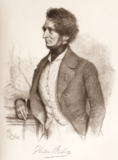
The Symphony
After Beethoven, the symphony became the most prestigious form to which many composers devoted themselves.
Romantic composers took some liberties with the classical form of the symphony. It was sometimes built not on musical themes, but around an idea, giving free rein to emotions.
The symphony orchestra itself evolves, enriched with new instruments.
Berlioz's Symphonie fantastique is a perfect example of this evolution: it is constructed in 5 movements instead of the traditional 4 (but it is true that Beethoven had already done so in his "pastorale"), and uses many instruments newly integrated into the orchestra, such as piccolo, cornet, English horn, ophicleide (a kind of tuba), harp, cymbals, bells, bass drum. Just like the symphonic poem, to which it is related, it is a program music (each movement describes a scene), using a leitmotif.
The leitmotif is a recurring theme, which returns in various forms throughout the work. In the symphonie fantastique, it is the "idée fixe", a melody representing the beloved.
Romantic composers mostly retained the classical form of the symphony in four movements, the first lively in sonata form , the second slow, the third in sonata form. Lied(ABA) or scherzo , the 4th vivid in sonata or rondo form .
Only the symphonies of Berlioz and Liszt follow a program.
The orchestra, which had grown in size with Berlioz, saw its numbers increase further after 1850, particularly with Mahler.




